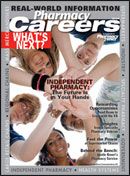Publication
Article
Pharmacy Careers
The Next Generation of Pharmacy Practice
Author(s):
Mr. Schu is group editorial director for MJH & Associates
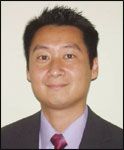
Moderator: David Trang, RPh
"Do you think society is going to be moreexcited and value a practitioner who waits until someonegets sick before they take care of them or a practitionerwho will keep them from getting sick?"
With that provocative question,Lawrence "LB" Brown, PharmD,PhD, assistant professor in theDepartment of Pharmaceutical Sciencesat the University of Tennessee-Memphis, kicked off a recentPharmacy Times roundtable discussionon the continuing evolutionof the pharmacy profession.The roundtable, one of an ongoingseries, brought together a distinguishedpanel of pharmacist leaders, academicians,and community pharmacists. The moderator was DavidTrang, RPh, assistant professor of pharmacy practice,University of the Incarnate Word, Feik School of Pharmacyin San Antonio, Texas. Entitled Pharmacy Professionin Transition: From Products to Services, the discussionranged from technology to pharmacist leadership to howpatients view pharmacists.
LEADERSHIP TRAINING IMPORTANT
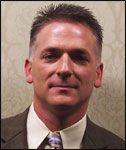
Mike Peerson
One of the first topics the paneliststackled was the lack of leadershiptraining many pharmacist studentsreceive and how that translates laterinto difficulties managing people orleading a pharmacy team in theircommunity pharmacy. "We clearlysee that [today's students] are readyto deliver patient care services to ourpatients far better than even I wasprepared," said Mike Peerson, director of talent services andcampus relations, Walmart Stores Inc. "One element thatwe would like to see is for students to have some leadershipdevelopment in their curricula, specifically around dealingwith conflicts. Many of them do not have that skill set."
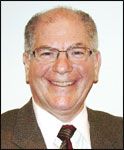
Ed Cohen, PharmD
Ed Cohen, PharmD, director of clinical services, Med-Monitor Clinical Program, ClinicalEducation and Immunization Servicesat Walgreens Health Services,agreed. "The disconnect betweenwhat [students] are learning in collegesof pharmacy and then [whatthey learn] when they go to thecommunity setting as technicians ishuge. In school, their focus is moretoward therapeutics. Managementclasses and business classes are always scheduled rightafter therapeutics. So the only thing they remember iswhat they learned in therapeutics, not so much what thebusiness people are teaching them. It is a shame you cannotbring them back 3 or 5 years after they graduate andgive them those business classes as an add-on to their education,because that is when that information is pertinentto their career."
TIME FOR MEDICATION THERAPYMANAGEMENT
Trang then asked a key question that always comes upin regard to pharmacists' ability to provide patient care:"Do they have enough time to do medication therapymanagement?"
Sean Young, leader of the pharmacy innovations teamat Walmart, remarked, "I would argue that the pharmacistwants to deliver patient care, but the customeronly wants a product. The real question is: Would thatcustomer trade a 15-minute wait for a 2-hour or even anext-day wait? More importantly, would they trade thatnext-day pickup so that someone who is a diabetic can getthat service from a pharmacist?"
Dr. Brown responded, "Patients think far less of pharmaciststhan what we think. And I am not saying that asa negative. I am saying that means we need to do a betterjob of helping them understand what it is that we cando. Because their stereotypical view was, the communitypharmacist fills the prescriptions, and anything outsideof that was beyond [the patients'] understanding. I havedone some research about patients and their views ofwhat pharmacists should and should not do. Pharmacistswere willing to get involved in many aspects of patientcare, but patients, especially on expanded services, wereon the other side of the scale, saying no. That is becausethey do not know what pharmacists can do."
FOCUS ON PATIENT PERCEPTION
Daniel A. Hussar, PhD, Remington Professor of Pharmacyin the department of pharmacy practice and pharmacyadministration at the Philadelphia College of Pharmacy,University of the Sciences in Philadelphia, raisedan interesting point about patient perception. "In somepharmacies that they go into, it is tough to tell the differencebetween the pharmacist and the technician," hesaid. "We do not do a good enough job as a professionin calling attention to our professional identity and ourservices." One irony, said Dr. Hussar, is that pharmacistsrarely get credit for one of the most important servicesthey provide: catching a prescription for a patient who isallergic to it or avoiding a major adverse event the patientwill never know about. "We are talking quietly on thephone," Dr. Hussar says, "and we do not want to embarrassthe physician. We are not going to go out and tellthem, wow, I just saved your life."
Asked about how pharmacists can continue to add valuein today's information age, Jared Anderson, a studentfrom the University of Minnesota, said, "[Patients] areinundated with information on everything, and they cango to Wikipedia and look up information about amoxicillin,which is much more comprehensive than just whatis on the label. But that does not mean anything to themuntil they have the pharmacist distilling that informationdown to a few sentences that are really importantfor you.
"The value of the pharmacist is knowing which interactionsare really relevant, what issues really need to beaddressed, when the variance from the norm needs attention.That is what pharmacy has to give you."
AVOIDING MEDICATION ERRORS WITH TECHNOLOGY
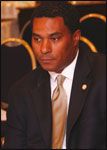
Lawrence "LB" Brown, PharmD, PhD
Moving to the topic of technology and its ability to helppharmacists curb medical errors, panelist Crystal Lennartz,PharmD, MBA, from the National Associationof Chain Drug Stores, talked about how the judgmentand knowledge of the pharmacistare the true keys to finding andpreventing errors. "The systemsare definitely in place, but thereneeds to be the ownership by thepharmacist and that clinical judgmentcoming in and the serviceat the counter. Again, it is crucialto let the patient knowour value and what weare doing. We may hearabout these highly publicizedand often sensationalizedmedicationerrors, but the patienthas to remember thatit is the one case thatgets all the attention. Ofcourse, one error is toomany, but there are somany that we prevent."
"I will go back to whenI first started practicing30 years ago—we couldnot talk to patients, wecould not give them anyinformation at all," said Dr. Cohen. "Today, we are givingpatients all the information they need. We are talkingabout MTM services and reviewing their therapy. Beforetheir prescriptions are filled, we sit down with them andtalk to them. We immunize. So pharmacists have somuch value; we have come so far."
THE FUTURE OF PHARMACY
"My hope is that, 20 years from now, society would havechanged their expectations for why they go to the pharmacy,"said Dr. Brown. "Because right now they prettymuch go to the pharmacy to pick up their product. But,in 20 years, I am hoping they are not only going thereto pick up their medications but to get those medicinesmanaged and to get some counseling on how to usedevices. The pharmacy is revolutionized to the point thatit is still doing its basic service, but it is so different that itis nothing like it used to be before."
As the panelists closed their discussion, Dr. Hussaroffered an inviting look at the future of pharmacy. "I amvery optimistic about the opportunities for pharmacy inthe future," he said. "I think that right now, and 20 yearsfrom now, there has never been a time when there is agreater need for the knowledge and services that pharmacistsare able to provide because of the aging of society.And they are the individuals who are using the mostmedications. I think there is a tremendous opportunityfor the profession."
